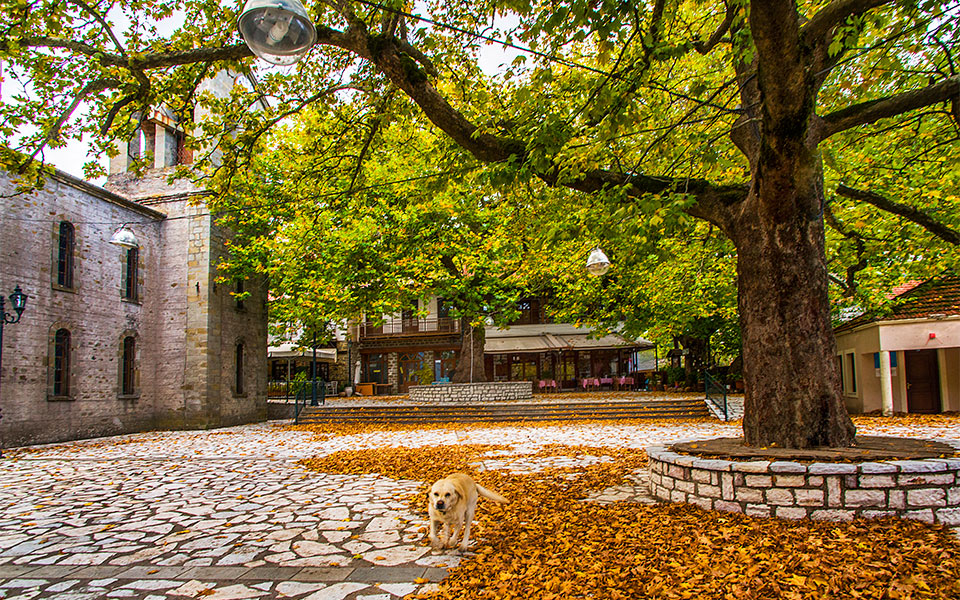For our picks on where to stay / eat etc. in Karpenisi see the bottom of this article.
Valleys, gorges and imposing rock faces, rivers that merge, and endless forests of firs, chestnuts and towering plane trees. Small, primarily stone-built villages nestled on the slopes and in the foothills of Mount Kaliakouda and Mount Helidona complete the stunning and diverse landscapes of Karpenisi.
Approximately 2,500 people live year round in the villages, while another 8,500 live in the mountain town of Karpenisi itself located in the heart of mainland Greece.
To get to the gorges and the villages one passes through the town which, while not spared the anarchic building one often finds in the Greek countryside, has open and friendly people who, when speaking quickly, have a way of dropping syllables almost poetically. The town also has a well maintained square, roads with subterranean heating to keep them from icing over in the winter, a new skate-park, genteel nightlife and good tavernas.
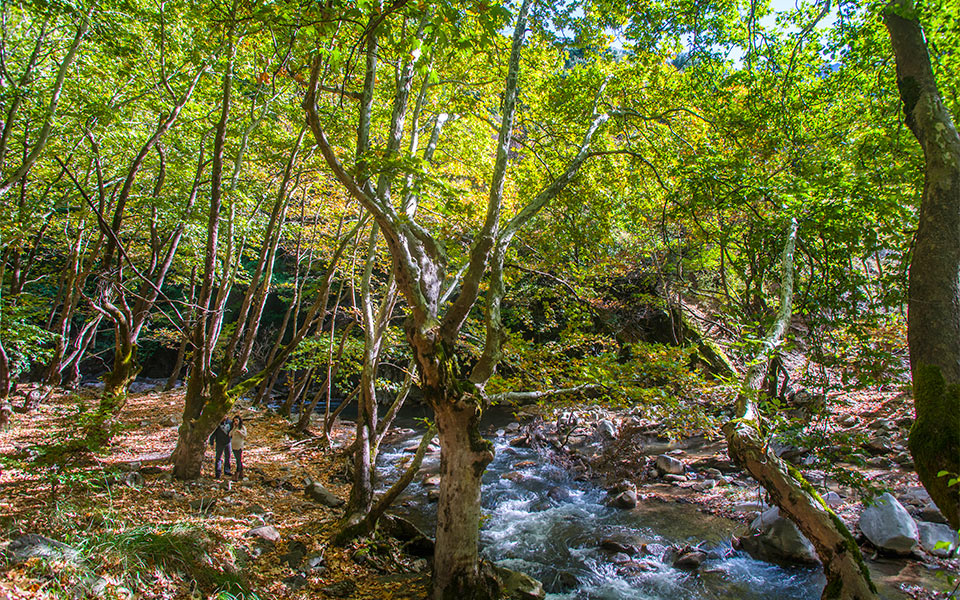
© Clairy Moustafellou
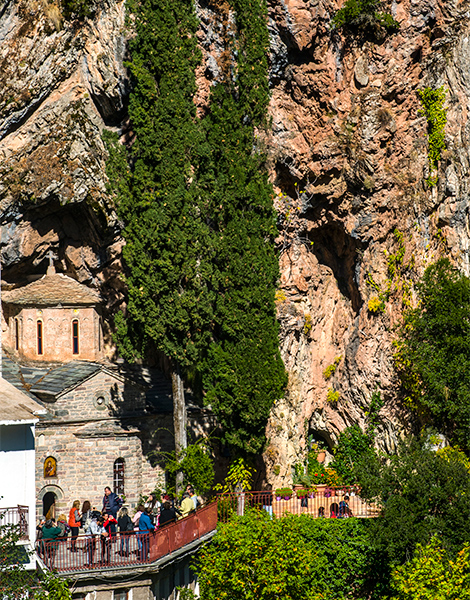
© Clairy Moustafellou
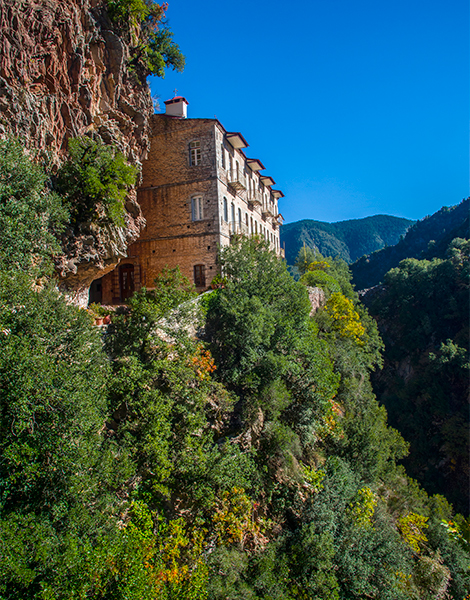
© Clairy Moustafellou
“Karpenisi first became known for [the monastery] Panaghia Prousiotissa and later for the ski resort,” says Vasso Skarmoutsou one Sunday morning in the café-bar Skala. As she says this, outside the hotel Helvetia directly opposite, a coach disgorges its passengers who are heading to the monastery. The ski resort has not opened yet, so there are no ski poles and colorful ski suits in sight. Only well-dressed, and well-coiffed, men and women.
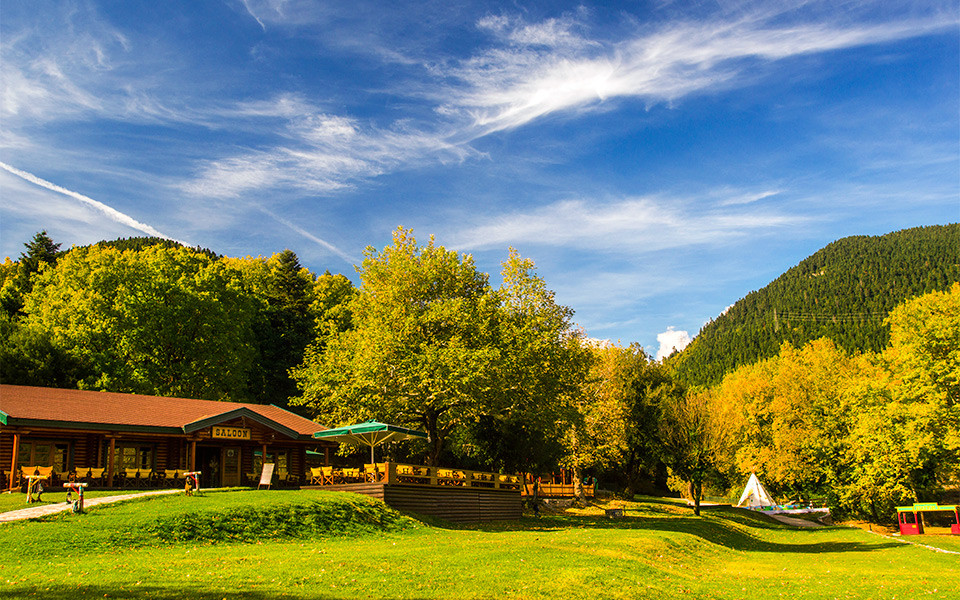
© Clairy Moustafellou
Autumn scenes
Taking the road for Potamia, the first kilometers feature a number of stops ideal for families with children, such as Saloon – an adventure park and recreational horse-riding center – as well as guesthouses with well-put-together playgrounds.
Side roads lead to the villages of Potamia – the narrow valley that separates the mountains of Helidona and Kaliakouda. The river Karpenisiotis flows through it, with tall plane trees on its banks as well as fallen red, yellow and brown leaves strewn about in the autumn months. On the slopes of the mountains, walnut, chestnut and other deciduous trees add to the area’s autumnal palette which reaches its peak towards the end of November.
In Koryschades, the traditional architecture has been preserved thanks to a program run in the 1980s by the National Tourism Organization (EOT). Today 5 small guesthouses operate in the village, while the old elementary school next to the square with its stone fountain now houses the National Resistance Museum.
The location is fitting given that in May of 1944 the school’s classrooms were used for sessions of the National Council (the legislative assembly convened following secret elections held during the Axis occupation).
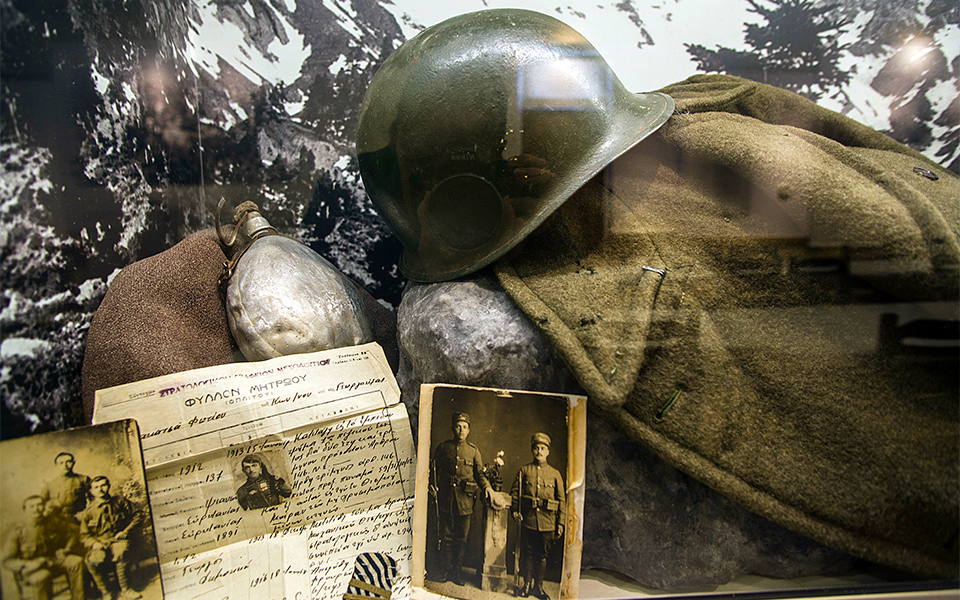
© Clairy Moustafellou
We meet 87-year-old Nikos Liapis next to his home in the halls of the Folk Museum in Megalo Chorio. He speaks to us proudly about fighting alongside the rebels at a very young age, and with regret over his participation in the civil war. “All of that was insanity, especially for those of us who lived it,” he says before leaving us with a wish, “Be healthy and love each other!”
Megalo Chorio (literally ‘Big Village’) is the most touristic village in the area, with cafés and sweet shops lining the main road as well as shops selling local products. At the same time it is the only one in which you will find a couple of tavernas open on weekdays. They cater mainly to the coach loads of visitors to the Monastery of Prousiotissa.
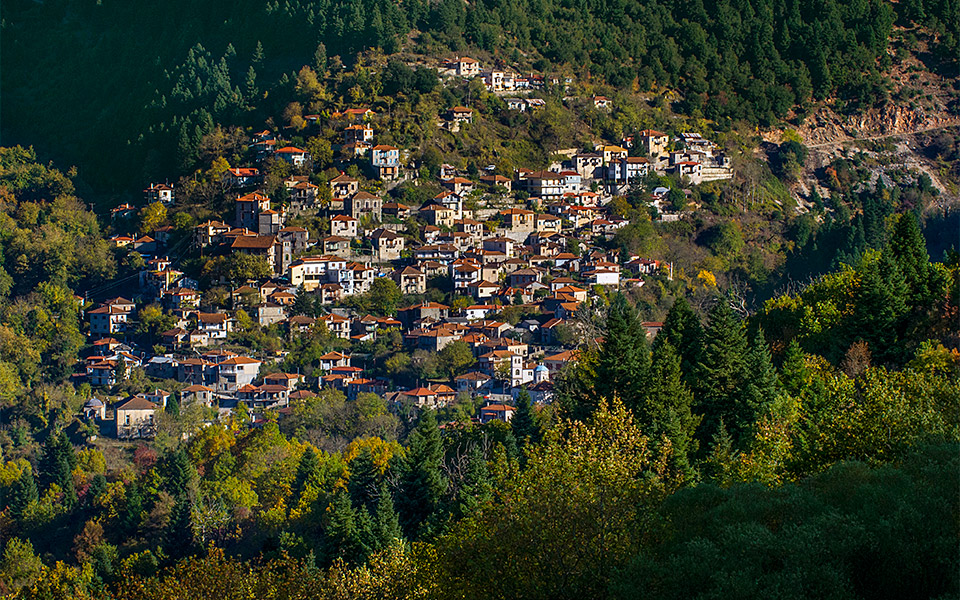
© Clairy Moustafellou
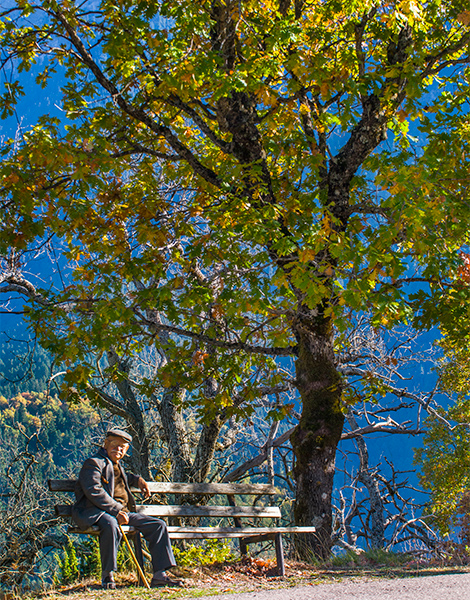
© Clairy Moustafellou
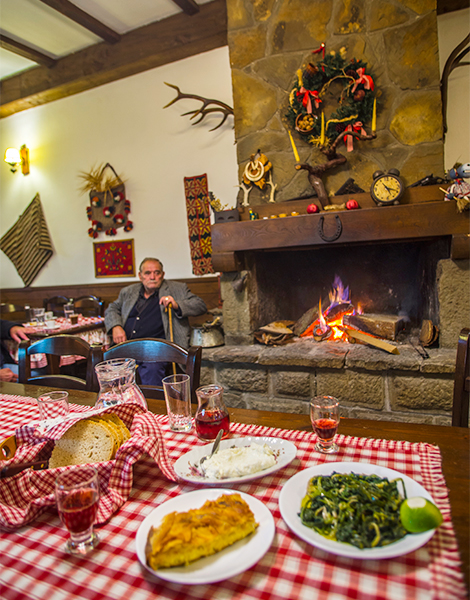
© Clairy Moustafellou
On the opposite hillside, is the Palio Mikro Chorio, which was cut in two by a landslide in January of 1963, and retains architectural elements that make it much more interesting than Neo Mikro Chorio which was built further down by the survivors who had lost their homes. In the latter you will find “To Oikeion,” a comfortable restaurant-bar with a huge fireplace in the center, a playroom for kids in the next room and swings and seesaws in the garden.
The more modern spaces – especially the new hotels around the town of Karpenisi – are interspersed with the quaint, traditional cafés and tavernas found throughout the area. In particular, the village of Gavros on the main road is a popular stop for many, known as the village with all the tavernas.
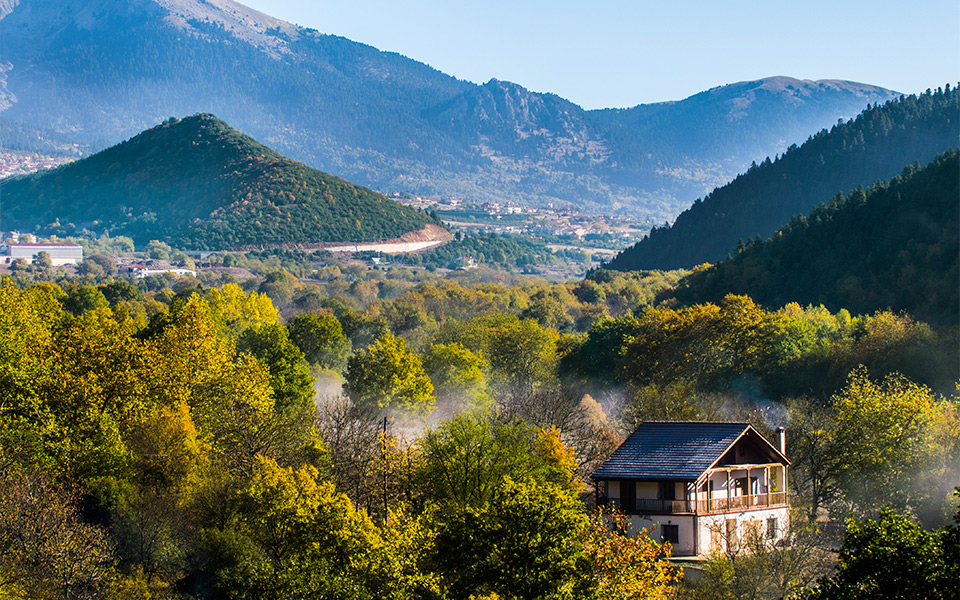
© Clairy Moustafellou
Good traditional cooking, clean air and close contact with nature. That is what Karpenisi offers, with a simplicity that soothes when you surrender yourself to its landscapes. A stop on the banks of the Karpenisiotis, a few kicks of the fallen leaves against the backdrop of the roar of the river is enough to empty one’s mind of worries and concerns. If you want more, seek out the country road to the accurately named Platanodasos – Greek for “plane tree forest”.
The valley of Potamia leads on to a deep gorge and there are points along the road where the view is jaw-dropping, like Kleidi. For the observant, what are also interesting are the small, sparsely built settlements on the mountainside such as Drepani, as well as the terraces built by earlier generations of farmers on the steep slopes that allowed them to grow crops in this wild and unforgiving landscape.
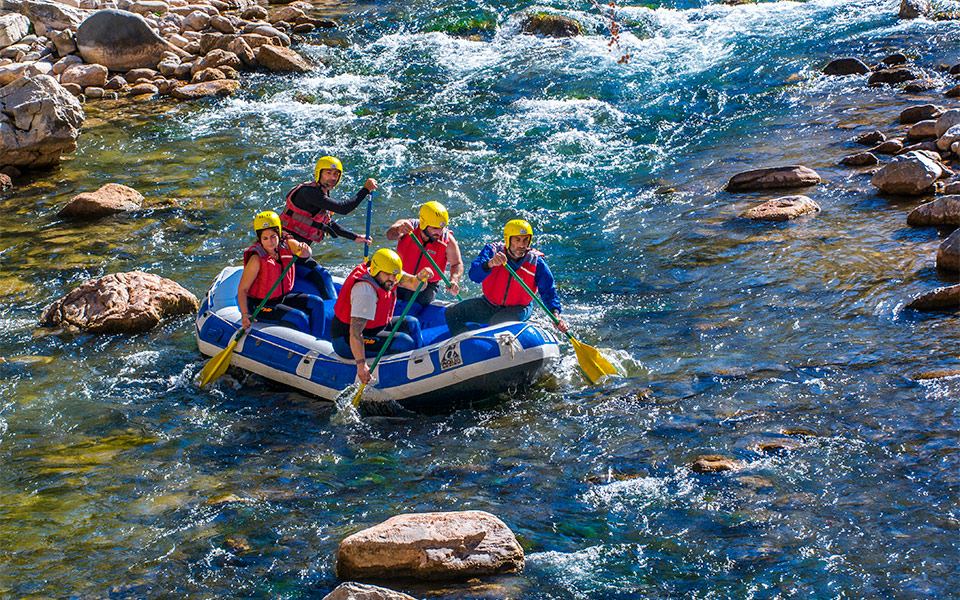
© Clairy Moustafellou
Dipotamo (meaning ‘two rivers’) is the point where the Karpenisiotis river joins the Krikellopotamos to form the Trikerioti river. In the winter and spring these rivers are ideal for rafting, which has become one of the most popular activities in Karpenisi.
The hiking trails are also many, with the most famous being the one that leads to the cave of Mavri Spilia. Equally enjoyable are the 4×4 routes – one of these, near Dipotamo, leads to the gorge Mikro Panta Vrechei. We descend as far as the bridge with Deputy Mayor Dimitris Vonortas. On his phone he shows us photos of the same spot covered in ice and icicles – its an indescribably beautiful landscape which completely transforms from season to season.
Above the main road, the “Patimata tis Panaghias” (Virgin Mary’s Footsteps) are footprint-shaped marks in the rock which are considered by believers to be miraculous, and next to them you will see many votive offerings as well as all manner of children’s toys. Father Christostomos says that before the road was built in 1970, pilgrims would reach the spot via mules walking along the narrow footpaths.
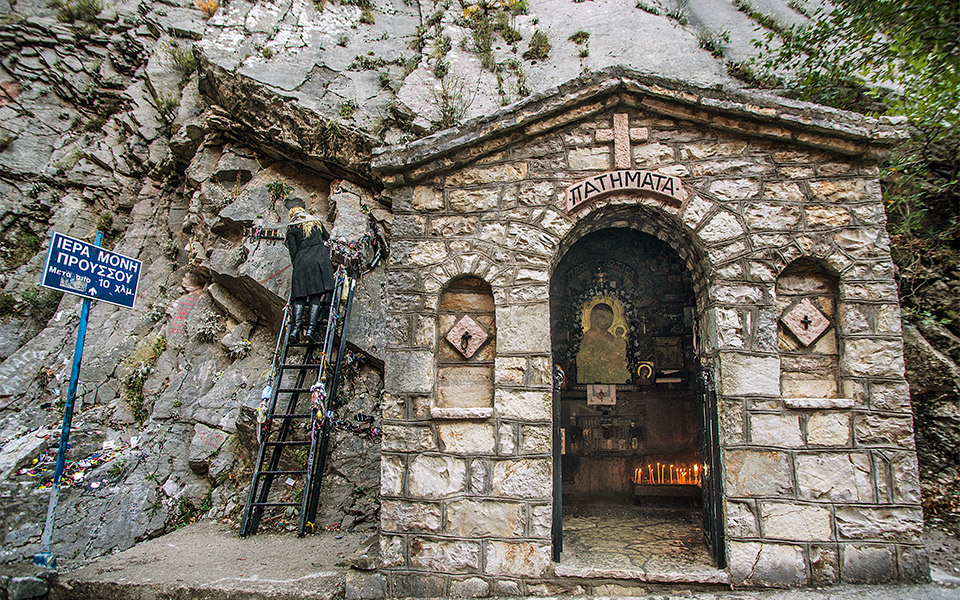
© Clairy Moustafellou
The Prousos Monastery has been through various phases of reconstruction and today does not particularly stand out architecturally. It is worth lingering however inside the cave where the icon of the Virgin Mary was hidden in the year 829 during the Second Iconoclasm, when religious images were banned by authorities in the Eastern Church and many icons were destroyed. Whoever hid the icon here likely saved it from the purge. The chapel that was built around the icon in the cave features murals depicting the saints with remarkably gentle gazes.
A little further up, the village Prousos is inhabited by about 15 elderly individuals and has its own picturesque square with the requisite plane tree in its center. A few years ago a new resident also moved in who took over the hotel Agathidis, the village’s only one. It would appear that the future of the village rests on his shoulders.
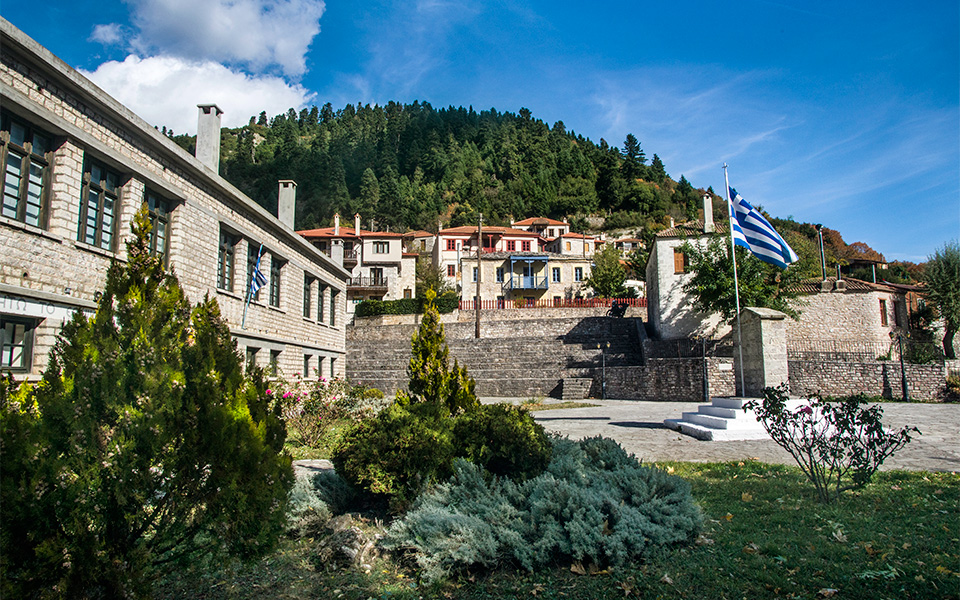
© Clairy Moustafellou
A Tale of Two Road Trips
To Krikello and Domnitsa
At Klafsi (or Klapsi) there is the paleochristian church of Aghios Leonidis, dating to the 5th century, with a very interesting mosaic floor. The only problem is that to see it, one needs to track down the priest who has the key.
Passing through Klapsi, Mouzilo and Aniada, you will see front gardens and small vegetable patches, villages that live off agriculture and maintain an unrefined aesthetic. You will drive along many bends on the fir-covered slopes of Kaliakouda. The intersection that leads to Doliana via a dirt road is where the route alongside the river begins for the gorge of Panta Vrechei (‘Always Raining’), an enchanting landscape that gets its name from the waterfalls that wet visitors and are better visited in the summer.
More bends follow until the village of Krikello looms to the left at an elevation of 1,120m. Take a stop for a panoramic photo and then enter the village which has two good tavernas and a smattering of guesthouses.
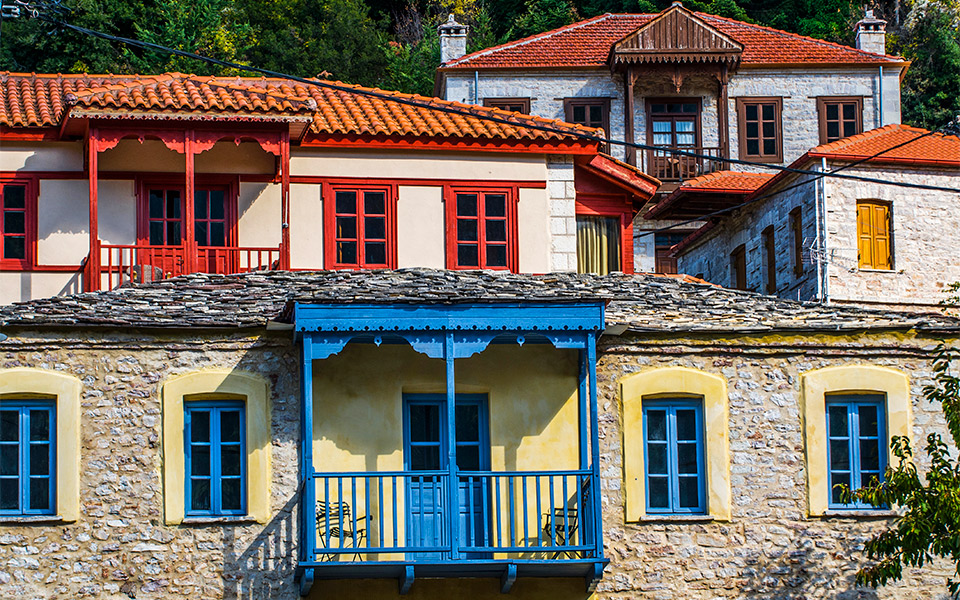
© Clairy Moustafellou
The village’s 12 children belong to restauranteur families and commute daily to Karpenisi where they go to school. “If you have lived elsewhere, coming back you appreciate differently the quiet and quality of life that small villages like Krikello offer,” says Christos Panaras, who owns the taverna “Antigone” and was born in the US to immigrant parents. He now lives with his family in Krikello.
Next stop is Domnista, a village with evident signs of desertion. There are no guesthouses, just a shuttered two-story building with a dated wooden sign labeling it as a onetime hotel. But Domnista will reward those looking for genuine mountain village settings with grill houses like “Metoiko”.
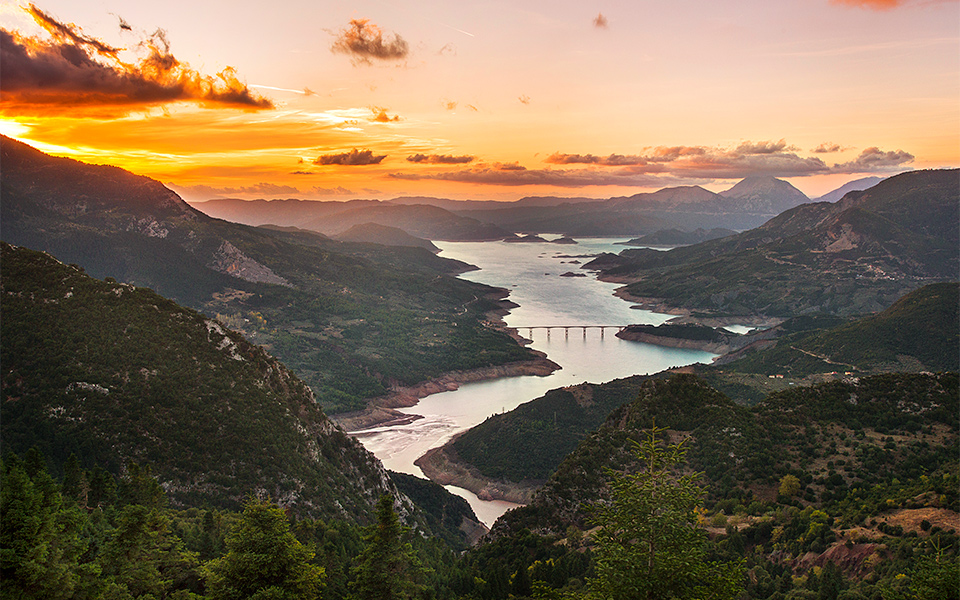
© Clairy Moustafellou
Towards Fidakia and Limni Kremaston
Passing through Stefani, Milia, Sella – all small villages and not at all touristic – you will reach Fidakia, a pretty stone-built village with a view over Kremaston lake in which you will find a guesthouse, a taverna and Christos Leris, the Greek-American owner of both who will tell you stories from his teenage years in New York.
Further up the road there is another spot with a wonderful view over the lake, the largest man-made body of water in Greece, which was created following the construction of a dam in 1965.
For all those not intimidated by dirt roads, a detour leads to the lakeside beach of Aghia Vlacherna and to the banks of the river Trikerioti where in the summer locals and tourists swim in the cold, fresh waters.
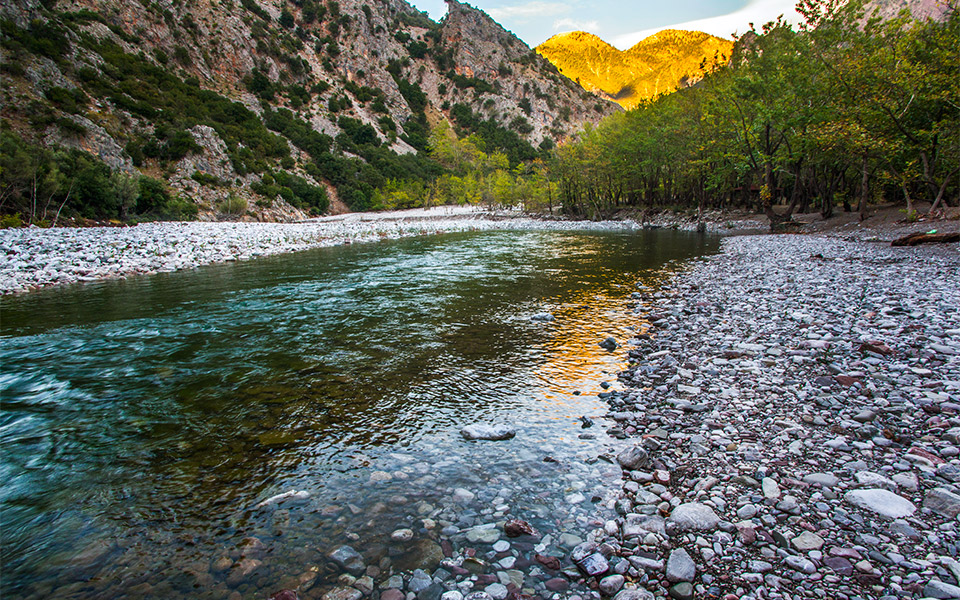
© Clairy Moustafellou
For road-trip lovers, keep heading uphill until you reach Dipotamos. You will see the peaks of the surrounding mountains from up high and, if it is open, you can stop at the café in Aspropyrgos which first opened in 1934. It has the rough-around-the-edges aesthetic of an earlier era and serves mouraki: tsipouro made from berries instead of grapes which will have you breathing fire thanks to its 60% alcohol content. A wood fire, slanted wooden flooring, every elderly patron sitting at his own table – even though they are all one big group – and Greek coffee served in a short wine glass.

